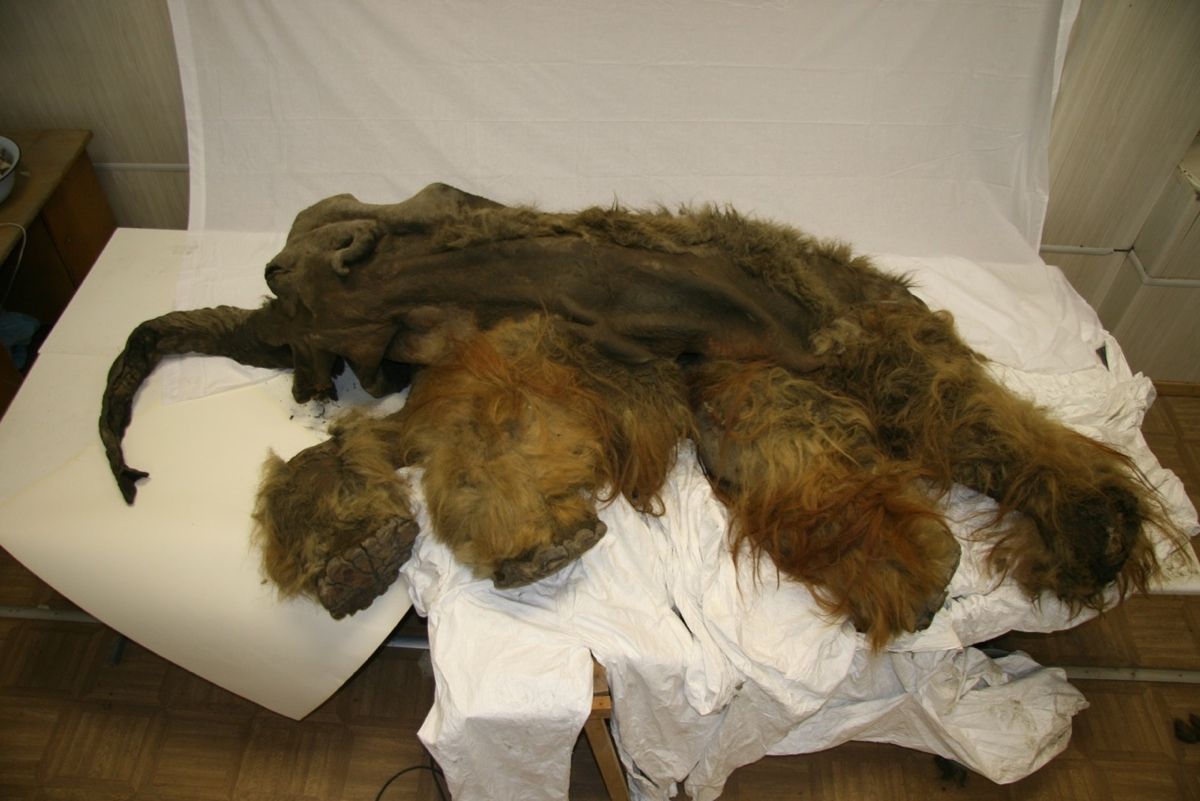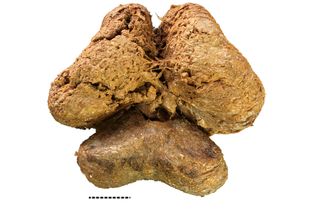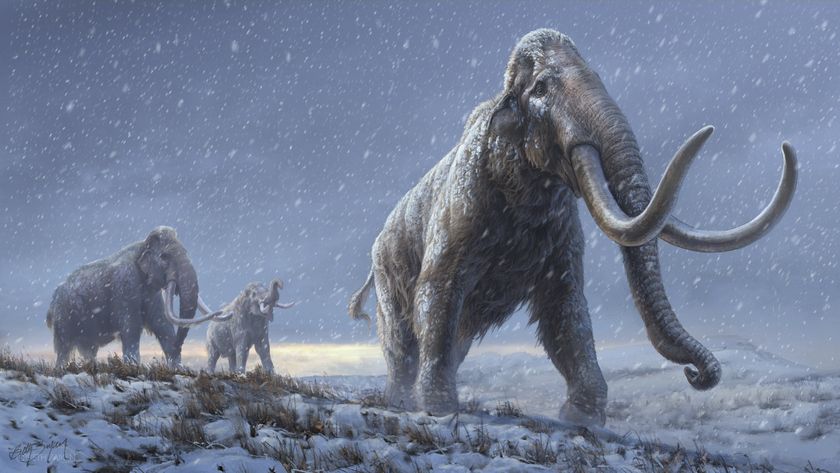Woolly Mammoth Mummy Yields Well-Preserved Brain

The mummified brain of a well-preserved woolly mammoth found in the Siberian permafrost is the only mostly intact mammoth brain known to science, which has been described in a new study.
The mummified carcass of the 39,000-year-old woolly mammoth, which included the brain with folds and blood vessels visible, was found in August 2010 on the Laptev Sea coast near Yukagir, Russia. The mammoth, named Yuka, was 6 to 9 years old when it died, the researchers found.
The mummy mammoth was then transported from the coast and put into ice storage about 93 miles (150 kilometers) from the site, but has changed locations several times since. Having arrived at its most recent destination, Moscow, the specimen is on display until Nov. 6 at the first festival of the Russian Geographic Society. [See Photos of the Baby Woolly Mammoth and Brain]
In the new study, researchers examined the animal's brain using computed tomography (CT) and magnetic resonance imaging (MRI) scans. Thanks to the scanning technology, the investigators were able to study the well-preserved cerebellum, located at the back of the brain, and even see the white and gray matter of the cerebrum. The forebrain was in poorer condition than the cerebellum, the researchers wrote in the study, published online Oct. 25 in the journal Quaternary International.
"Until now, there was no opportunity to examine the whole brain of a woolly mammoth, which might have had complicated behavior, similar to modern elephants," Anastasia Kharlamova, of the Research Institute of Human Morphology, Russian Academy of the Medical Sciences, in Moscow, and colleagues write in the journal article.

Moreover, the investigators even found traces of nervous tissue — the main component of the nervous system, responsible for reacting to stimuli and communicating impulses to different parts of the body — while examining the brain.
"The Yuka woolly mammoth specimen is the first mammoth [and large mammal] finding with the preserved brain from permafrost in the history of paleoneurology," Kharlamova told Live Science in an email.
Sign up for the Live Science daily newsletter now
Get the world’s most fascinating discoveries delivered straight to your inbox.
"And it is still [the] only mammoth specimen with the preserved brain," she said, describing the presence of the brain in this large extinct species as something absolutely new in this field of research.
When the researchers trepanned the animal's skull to get to the brain, which means that they made a cut in the skull, using tools that included an angle grinder, a dental drill and chisels, they saw that there were still remains of soft tissue on its surface, according to the study. [How to Bring Back the Woolly Mammoth (Infographic)]
The mammoth specimen also had a well-preserved dura mater — Latin for "tough mother" — a dense membrane that protects the brain and spinal cord, as well as visible vessels and sinuses, the researchers wrote. The brain was stained brown due to oxidation, and it had shrunk, as its volume was 45 percent smaller than the volume of the cranial cavity, or the space inside the skull that houses the brain.
The brain may have thawed and frozen again several times, as the carcass has been stored in different conditions, the researchers wrote in the study. They found that the brain's structure was similar to that in modern-day elephants, which are related to mammoths, as both species belong to the same family of Elephantidae.
Based on their experience with Yuka, the researchers even came up with a set of tips that suggest the best strategies on how to proceed with preserving mammoth brains in the future.
"If there is an indication that the specimen discovered in permafrost has a preserved brain, it should be transported in a frozen condition," while it is inside the cranium, to avoid mechanical damage and deformations, they wrote in the study, also recommending that repeated thawing and freezing should be avoided at all costs.
This may be the first intact mammoth brain, but not the first of these ice-age animals to be unearthed. Two female baby woolly mammoths, dubbed Lyuba and Khroma, were uncovered from the Siberian permafrost in 2007 and 2009, respectively. The CT scans of these mammoths, whose stomach contents were found preserved, revealed skeletal differences between the two that may be due to some evolutionary change that occurred in the mammoth lineage — Khroma's remains dated to an earlier time than the 42,000-year-old Lyuba. Even so, their brains were not well preserved.
Follow Agata Blaszczak-Boxe on Twitter. Follow Live Science @livescience, Facebook & Google+. Originally published on Live Science.












